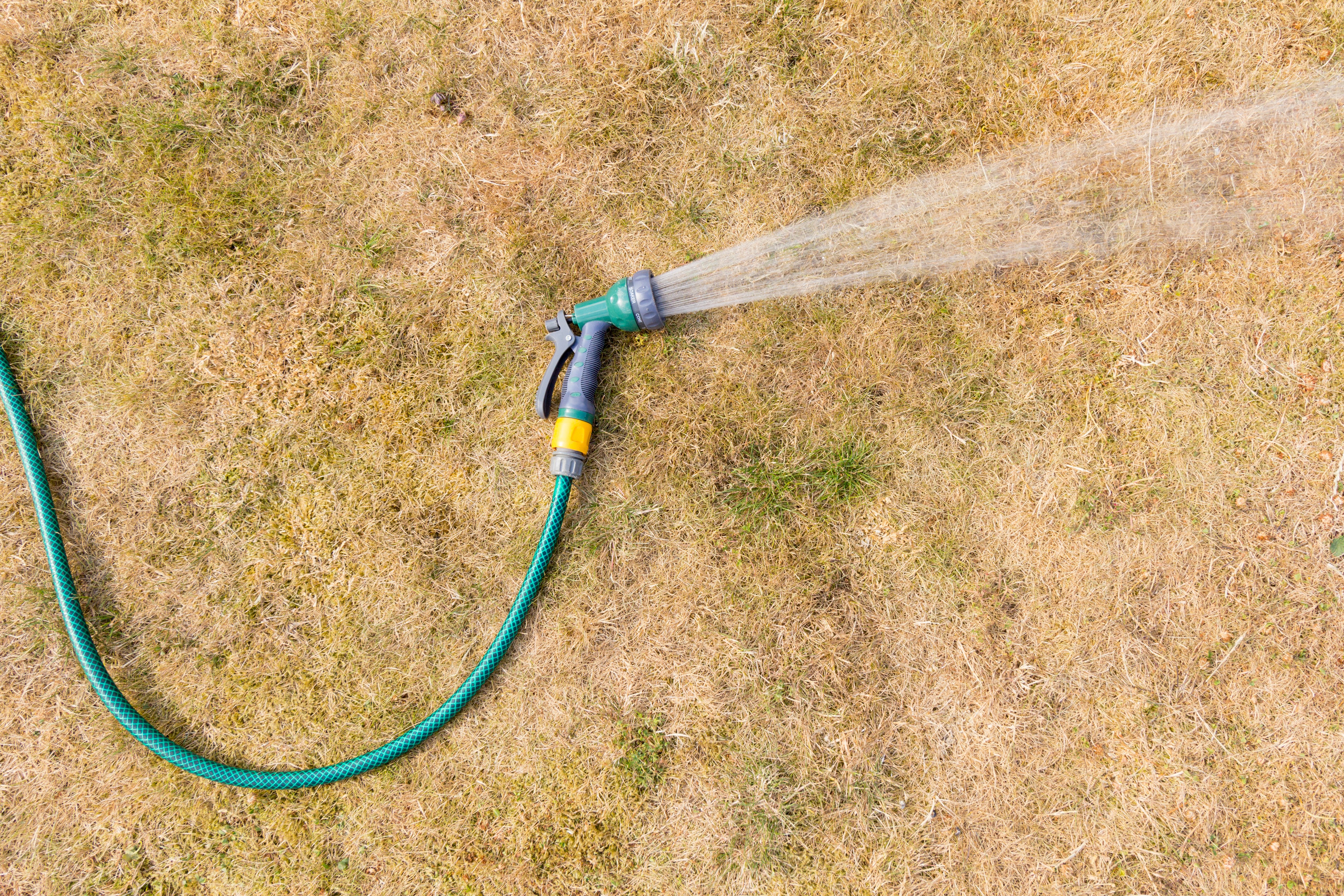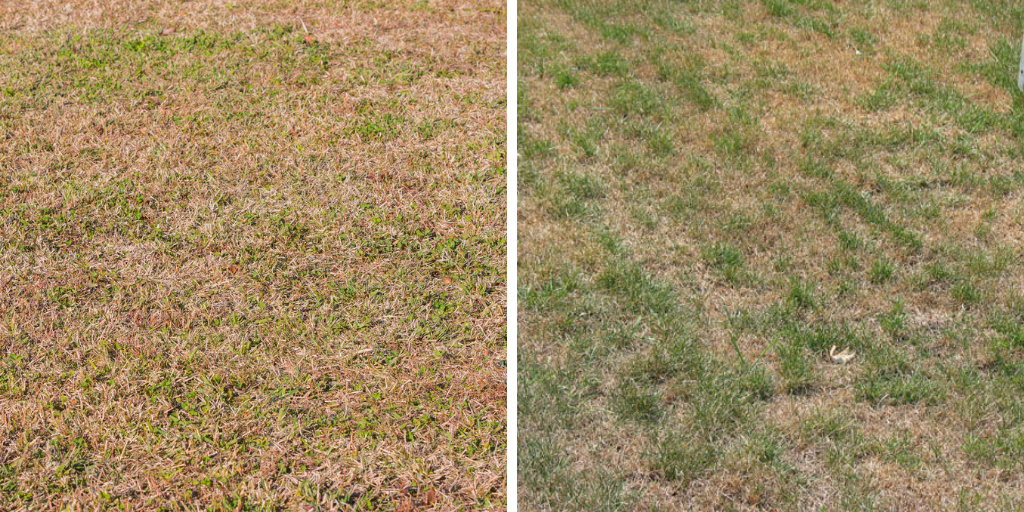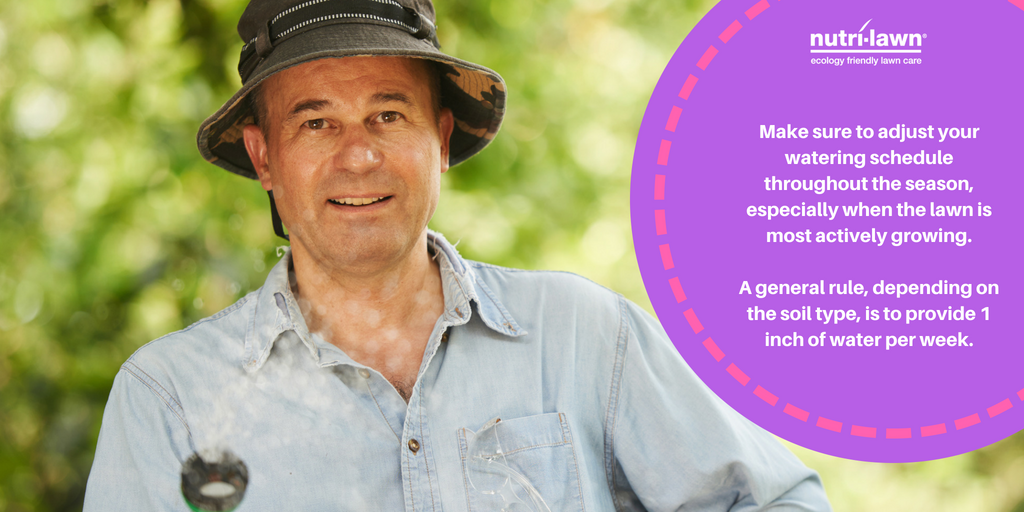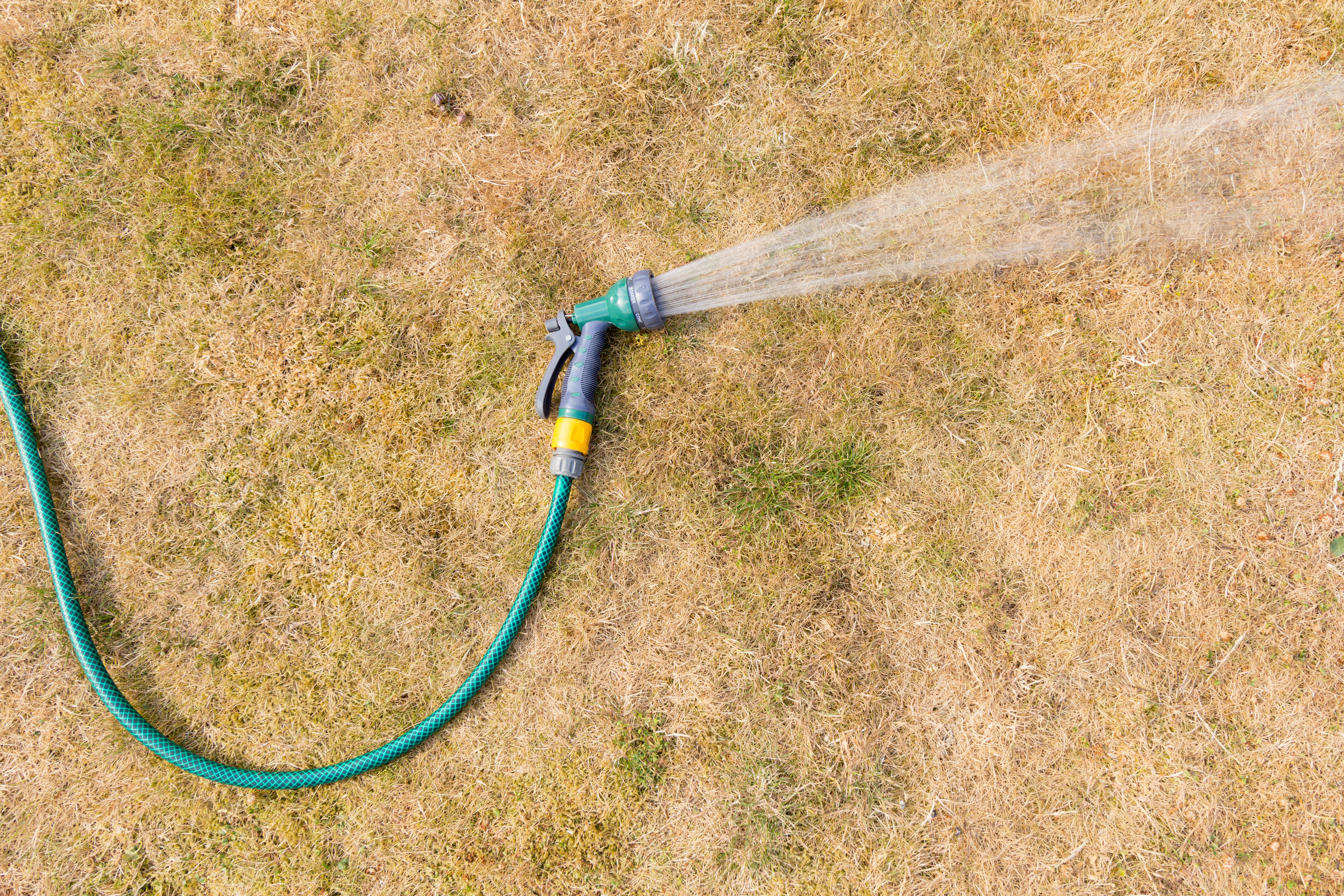
Summer in Canada sure is great! The weather is warm, there's cool lakes to swim in, and the starry nights we spend outside with family and friends seem to go on forever. What could one possibly be stressed about in summer?
Oh yeah, your lawn... which may be turning an unsightly brown colour before your very eyes. Turf damage can occur when summer conditions are extreme and prolonged, leaving lawns in need of costly repairs. Goodbye summer bliss!
If your lawn is dormant or suffering from summer stress, panicking is the last thing you should do. The grass plants may appear dead to the naked eye, but deep inside the plant there is a small area (called the crown) which is still alive. Once this crown gets rain again, it will come to life and the turf will usually green up in the following weeks.
Learn more about dormant summer lawns and potential remedies by reading on!
Dormant Summer Lawns

Remember, lawn dormancy can look much worse than it actually is. When a lawn is stressed from extreme heat or lack of water, the grass plant has a natural defense mechanism that kicks in to protect itself. In doing so, the lawn turns brown in colour conserving energy as though it may appear dead. The lawn can stay this way for several weeks and even months (depending on the grass species) before any permanent damage occurs.
Lawn dormancy is usually only temporary, and recovery naturally takes place as the stressful conditions lessen. Maintaining proper mowing and watering practices during stressful periods is important to limit any potential damage.
Heat and Drought Tolerance
Summer heat, drought stress, insect damage, and disease pressure can have a major impact on the health of a lawn. If stressors, prolonged exposure, and extreme conditions exist, both minor and major turf damage can occur leaving the lawn in need of repair.
Maintaining a lawn under the stress of extreme heat and prolonged periods of extensive drought can be very challenging. Each turfgrass species performs differently under these conditions and the tolerance can be drastically different from one species to another. Despite these differences, the underlying factor of drought and heat stress remain the same in that they both weaken the turf making it more easily injured or killed by other stressors, including chinch bugs, white grubs, or turfgrass diseases.
How Do You Fight It?
Watering Schedule: Your lawn requires about 1 inch of water at a time. If you apply more than that, or less, the grass will stress. Ideally, you want to avoid stressing the plant as much as possible. Even in drought conditions, you can water the lawn more frequently but never more than an inch at a time.

Water is best applied in the early morning hours before the day heats up. This prevents mold and mildew growth, evaporation, and prevents heat stress. Your lawn will not thrive if kept mown too short. A short lawn will wither and go dormant a lot faster in a heat wave than grass left longer. Ideally, raising the mower deck to 2.5-3 inches will help the grass shelter the soil keeping it cooler and moist longer. Mowing grass puts stress on the plant, so mowing during a heat wave is stress upon stress.
Proper Lawn Maintenance: If you want your lawn to stay green all summer instead of turning into a crunchy brown mess, there are certain techniques you’ll need to employ, like core aeration. Contact your local Nutri-Lawn today to learn more about these practices!
For more lawn care tips and tricks, follow us on Facebook or Pinterest.








